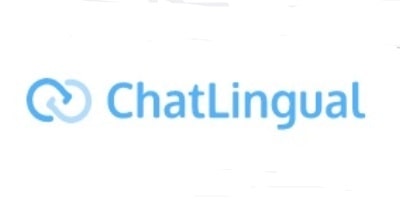Top 5 Insights for Leading a Multilingual Contact Centre by Justin Custer, CEO at ChatLingual
In a global economy, communicating with your customers in their language in the contact centre should be at the forefront of any customer experience (CX) strategy. Localisation allows brands to personalise their relationships with each customer, while offering the goods, services, and experiences that keep customers coming back.

Visionary brands are creating outstanding CX strategies by incorporating language services into every facet of their operations. And while it has shown to be a successful component of CX time and time again, companies are continuing to encounter obstacles in the midst of their multilingual customer service operations. Leverage the top five insights below to alleviate inadequate resource allocation and hiring challenges.

While it’s no secret that companies are facing pressing challenges with recruitment and retention, a 2022 NICE WEM Global Survey found that it’s not unusual for contact centres to experience a turnover rate of 50 percent.
To help them through this difficult period, many companies are turning to Business Process Outsourcing companies (BPOs).
For most companies, selecting BPOs that use a central hub as their operating model is the most popular due to its scalability and operational benefits. By using BPOs who run operations centrally, it minimises the overhead required from the client to manage the relationship. In the end, it can be a win-win for your business and your customers.

If you’d rather keep your operations in-house, then you’ll want to consider adjusting your hiring strategy. Bilingual language requirements add an extra step in the quest for sourcing the perfect candidate. On average, lead time for new hires takes 42 days, as stated by the Society of Human Resource Management. When language requirements are added to the equation, extra tests must be conducted to ensure the candidate’s language abilities.
According to International Recruitment agency, Linguistica, the easiest way to vet bilingual candidates is to ask them to complete an online target language proficiency test. Many of these tests are conducted remotely and will move the individual to the interview stage if the candidate passes the test.
Keep in mind the extended lead time for bilingual hires to avoid “panic hiring,” which could end up costing your company valuable time, money, and resources by placing candidates that aren’t the right cultural or technical fit.

Nine out of 10 employers rely on their workforce to have language skills other than English. These skills include being able to have a fluent conversation in a customer’s native language verbally and written; however, it can be hard to find native or bilingual agents that are proficient in both (and doesn’t break the bank).
With voice increasingly evolving to be an escalation channel, it is paramount that agents have the written skills to provide a technical and empathetic response to a customer’s initial request. The ability for advisors to multiskill is seen as essential, as agents may need to channel-hop between voice and email or chat.
CX leaders who participated in a recent study conducted by the Call Centre Management Association (CCMA) noted that it is harder to find expatriates with excellent written and spoken language skills than it is to find people who can simply speak well.
Facing these challenges, some companies have turned to translation technology for relief. Advancements in multilingual messaging tools can empower companies to recreate their hiring strategies–hiring for customer service skills first—not language.

Unlike live agents, chatbots are able to provide the quick, 24/7 service that customers demand. And while chatbots are in their relative infancy, many brands that have taken a leap of faith with these automated sidekicks are seeing good results.
Adding translation to your chatbot helps your brand connect with even more of your customers, enabling your agents to focus on higher-priority conversations in the queue. As with English-only chatbots, a good practice is to provide an option for the customer to switch to a live agent if preferred—without any hassle. The best multilingual chatbot experiences take this a step further by automatically connecting customers with a live contact centre agent quickly and seamlessly.

Assembling a strong customer support team and hiring individuals who will contribute to the success of your contact centre, can take a significant amount of your managers’ time and attention. And, you know as well as I do, your customers won’t wait forever.
Investing in translation technology can create flexibility for scale, lower costs, increase uptime, and improve tNPS. Translation technology not only alleviates challenges with customer peaks and valleys, but acts as a safety net to provide continued multilingual support while you find your perfect hire.
Don’t Cut Corners on Your CX
While operating a multilingual contact centre is no easy task, the right technology is making it so much easier. Within the decade, multilingual customer service will be the status quo for CX. Those that hone in on a multilingual support strategy will stay ahead of the competition.

ChatLingual’s enterprise-grade software creates best-in-class global customer support. Their team delivers the world’s most comprehensible multilingual contact centre solution, supporting customer interactions in 100 languages in real time across chat, email, SMS, and messaging channels. Implementing their cloud-hosted Agent Success Platform allows companies to easily converse with customers in their native language with no bilingual hires or translators required. The ChatLingual solution is cost-effective, quick-to-scale, and integrates into existing technology stack, allowing companies to focus on growing their business and delighting customers in their preferred language.
For additional information on ChatLingual visit their Website




